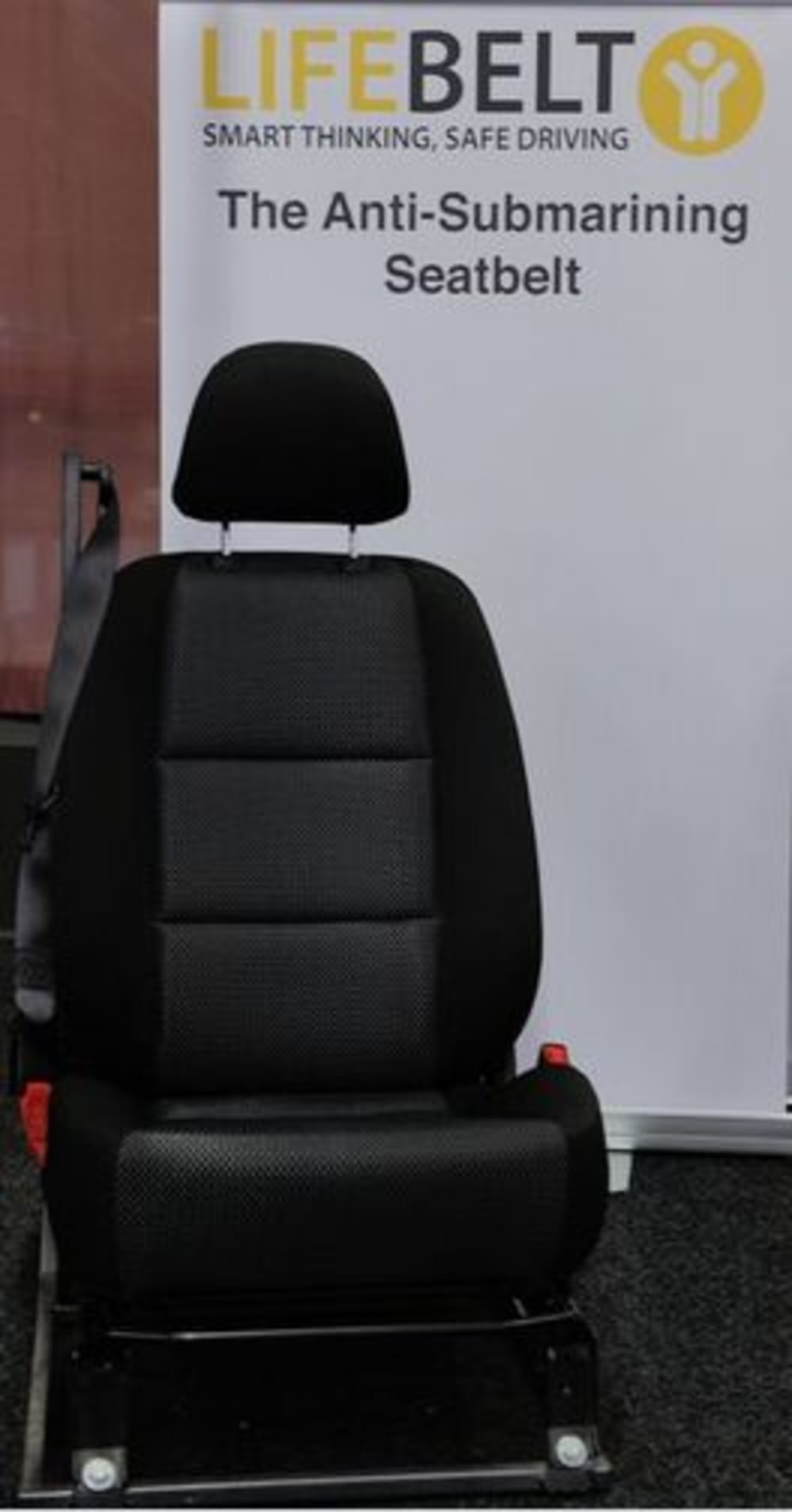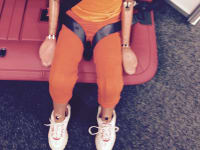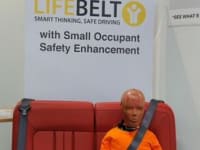The challenge with a seat belt is to prevent submarining of the occupant under the lap belt. This challenge increases as the size of the occupant reduces such as with 5%ile female. Traditionally this is addressed in front seats with a rigid steel pan (in combination with a pretensioner) to limit pelvis displacement.
Lifebelt is a webbing strap placed in the seat base, just below the seating surface, which is continuous with the standard seat belt and is therefore loaded when the seat belt loads. Its effect is to form a loop around the upper leg area which encloses the pelvis and prevents submarining. It can be located close to the seat surface and therefore engages very early compared to the seat pan providing superior control of adult occupants of the full range and no need for a pretensioner *.
Recent testing has shown a substantial reduction in lumbar spine loads whilst providing improved restraint when compared to the typical seat pan.
A new development has been tested to extend the effective range of LifeBelt for rear seat occupants. During the development testing it was recognised that whilst LifeBelt is effective (and more robust) in operating with the standard range of adult occupants 5%ile female through to 95%ile male, it was still not able to prevent submarining of a 10yo dummy but neither did a fully developed seat with a rigid steel pan and pretensioner. The new development known as SOSE (Small Occupant Safety Enhancement) under test showed complete restraint for the 10yo dummy without any submarining thus broadening the appeal of LifeBelt.
In front seats LifeBelt can provide a superior anti-submarining function compared to the traditional seat pan and provide an increased ability to alter the dummy kinematics by early restraint. It also reduces the risk of lumbar spine injury.
In rear seats LifeBelt can provide anti-submarining in applications where this is not provided today, or provide superior performance where the traditional solution has been used in the past. We are now seeing a strong trend toward testing with smaller occupants in the rear seat for NCAP programs. JNCAP & CNCAP already test frontal impact with 5%ile female in the rear seat. Euro NCAP has just introduced a frontal test with 5%ile female in both front and rear and next year will test with a Q10 (10yo dummy) in the rear. In 2017 KNCAP will follow Euro NCAP to test Q10 in the rear so the need to find a reliable low cost anti-submarining solution for rear seat is high.
The function of LifeBelt is invisible to the end user. The comfort of the seat is not affected and the seat belt is attached and worn in the normal way. If the SOSE option is applied, there is an additional action required by the user to engage it. The safety improvements offered by LifeBelt is marketable as is the additional function offered by SOSE.
Like this entry?
-
About the Entrant
- Name:Lino Fusco
- Type of entry:teamTeam members:Lino Fusco Robert Judd Dr Lui Pisaniello Dr Marcel Stephan
- Software used for this entry:None
- Patent status:patented








